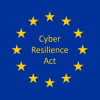Contrary to our expectations, energy consumption by ICT is a controversial subject where experts of different organizations may express divergent views [1]. Indeed, one reason for some of the controversies about ICT’s energy consumption is the relative lack of systematic measurement data. Although it may be technically possible to globally monitor the electricity consumed by ICT, it would require industry to take an active role of measurement and monitoring of its own energy consumption, both when it manufactures and provides ICT devices such as computers, laptops, home entertainment and game consoles, mobile devices, network forwarders, routers, copper and fiber connectors, wireless base stations and IoT devices, as well as the chips that go into them, and when it operates ICT systems. While this monitoring is already done by data center operators and by most network operators, it remains difficult to do so for the billions of devices that are constantly produced and utilized. It is also difficult to estimate the fraction of electricity consumed in order to secure ICT devices, and defend them from attacks. One side effect of cyberattacks is the increase of electricity consumed in networks during attacks, as well as the increase in electricity consumed within systems under attack due to processing overloads [2].
Obviously, experts from the computer industry tend to vaunt the increasing efficiency of digital equipment, while those that are concerned with sustainability will stress the projected increase of energy consumption by ICT, as well as the increasing use of rare and polluting materials for the fabrication of devices and digital chips. ICT is often put forward as the means to obtain savings in energy consumption with a resulting reduction of CO2 emissions, while ICT has over the last decade substantially increased its own overall share of electricity consumption, going from 4-5% a decade ago, to perhaps currently 8-10% of total electricity production, and an overall 2% share of carbon emissions, similar to the whole of air travel [3].
Certain ICT industry sectors also privilege the purchase of energy from renewable sources to improve their CO2 emissions; although this encourages electric power companies to increase their renewable energy supplies, it also pushes the non-renewable energy sources to other sectors of the economy (or to neighboring countries) that cannot negotiate or afford large energy contracts or pay premium prices. An example is the case of Canada which produces nearly 60% of its electricity from renewable sources (such as hydroelectricity), and thus attracts most Bitcoin miners and many Datacenters. At the same time, Canada uses a part of this “clean” electricity to produce shale gas and oil, which it then sells mostly to the USA, contributing indirectly to increases in CO2 emissions. Of course, carbon emissions per KWH of electricity vary widely from one country to another based on the primary sources of energy that are used, and countries such as Belgium and France that generate most of their electricity via nuclear plants have a very low average CO2 emission well under 100g per kWh of electricity. Another environmental concern regarding ICT that is seldom mentioned is that digital chips use nearly two-thirds of the elements of the periodic table, many of which require substantial energy to extract, and which can be significant polluters when ICT equipment is decommissioned.
In a world that consumed close to 25,000 TWh (tera-watt hours) of electricity in year 2019, ICT amounted to roughly 2,000 TWh, of which it is estimated that 50% was related to the manufacturing of new ICT equipment. Indeed, the manufacturing of ICT devices represents as much electricity consumption in one year as the total annual electricity consumption to run the devices. Other important figures are the 200 TWh consumed by data centers, 250 TWh by communication networks, while 550 TWH were consumed by end-users, customer premises servers, network equipment, laptops and mobile devices [4]. In the latter amount, we also need to include Blockchain and crypto-currencies, which are estimated to consume as much electricity annually as a small but advanced country such as the Netherlands.
As an order of magnitude, if we estimate at 10% the fraction of ICT equipment that is devoted to cybersecurity, and at 20% the amount of ICT system operations that are similarly devoted to cybersecurity (including attacks, but also system patches, updates and upgrades, and operations including blockchain that focus on security), we arrive at an energy cost of 300 TWh annually devoted to cybersecurity. At an average of approximately 475g of CO2 per kWh of electricity that is produced worldwide (this is the 2018 figure from the International Energy Agency), it maps to 142.5 million metric tons of CO2 for cybersecurity.
GSMA, the organization that represents the interests of mobile operators worldwide, indicates that 20-40% of the operating expenses of network operators are currently for electricity, and that 5G causes a substantial increase of energy consumption by communication networks in the first instance, before the technical means to reduce this consumption can be included in later generations of wireless mobile communication systems [5]. Methods that can achieve energy savings include the smart use of slower operation or “sleep” cycles for equipment when system workloads are lower, as well as optimum equipment replacement policies that take advantage of new equipment with lower power consumption, to offset the additional energy consumption due to manufacturing of new equipment, and the decommissioning of old equipment. Another way forward is to control via machine learning, important system properties such as network paths and computer loads so as to minimize objective functions that combine energy consumption and the quality of service provided by ICT and the IoT, as is studied in the H2020 SerIoT and IoTAC projects [6,7].
Thus the CO2 impact of cybersecurity needs to be considered as part of the operating and deployment costs of IoT systems, and ICT in general, and for its contribution to climate change, both as a means to save energy in other sectors such as smart homes, smart vehicles, reduced needs for physical transportation for work, shopping or education, and because of its own CO2 emissions.
References
[1] H. Ferreboeuf et al. Lean ICT: Towards Digital Sobriety. The Shift Project, March 2019, https://theshiftproject.org/wp-content/uploads/2019/03/Lean-ICT-Report_The-Shift-Project_2019.pdf
[2] O. H. Abdelrahman and E. Gelenbe, “Signalling storms in 3G mobile networks,” 2014 IEEE International Conference on Communications (ICC), 2014, pp. 1017-1022, doi: 10.1109/ICC.2014.6883453.
[3] E. Gelenbe and Y. Caseau. The impact of information technology on energy consumption and carbon emissions. Ubiquity Vol. 15, Issue June, Article 1, pp. 1-15, https://doi.org/10.1145/2755977
[4] G. Kamiya. Data Centres and Data Transmission Networks. International Energy Agency, Paris, June 2020, https://www.iea.org/reports/data-centres-and-data-transmission-networks
[5] GSMA. Energy Efficiency. https://www.gsma.com/futurenetworks/wiki/energy-efficiency-2/
[6] E. Gelenbe, J. Domanska, P. Fröhlich, M. P. Nowak and S. Nowak. Self-Aware Networks That Optimize Security, QoS, and Energy. Proceedings of the IEEE, vol. 108, no. 7, pp. 1150-1167, July 2020, doi: 10.1109/JPROC.2020.2992559.
[7] P. Fröhlich, E. Gelenbe, and M. Nowak. 2021. Reinforcement Learning and Energy-Aware Routing. Proc. 4th FlexNets Workshop on Flexible Networks Artificial Intelligence Supported Network Flexibility and Agility (FlexNets ’21). ACM, New York, USA, 26–31. DOI: https://doi.org/10.1145/3472735.3473390





